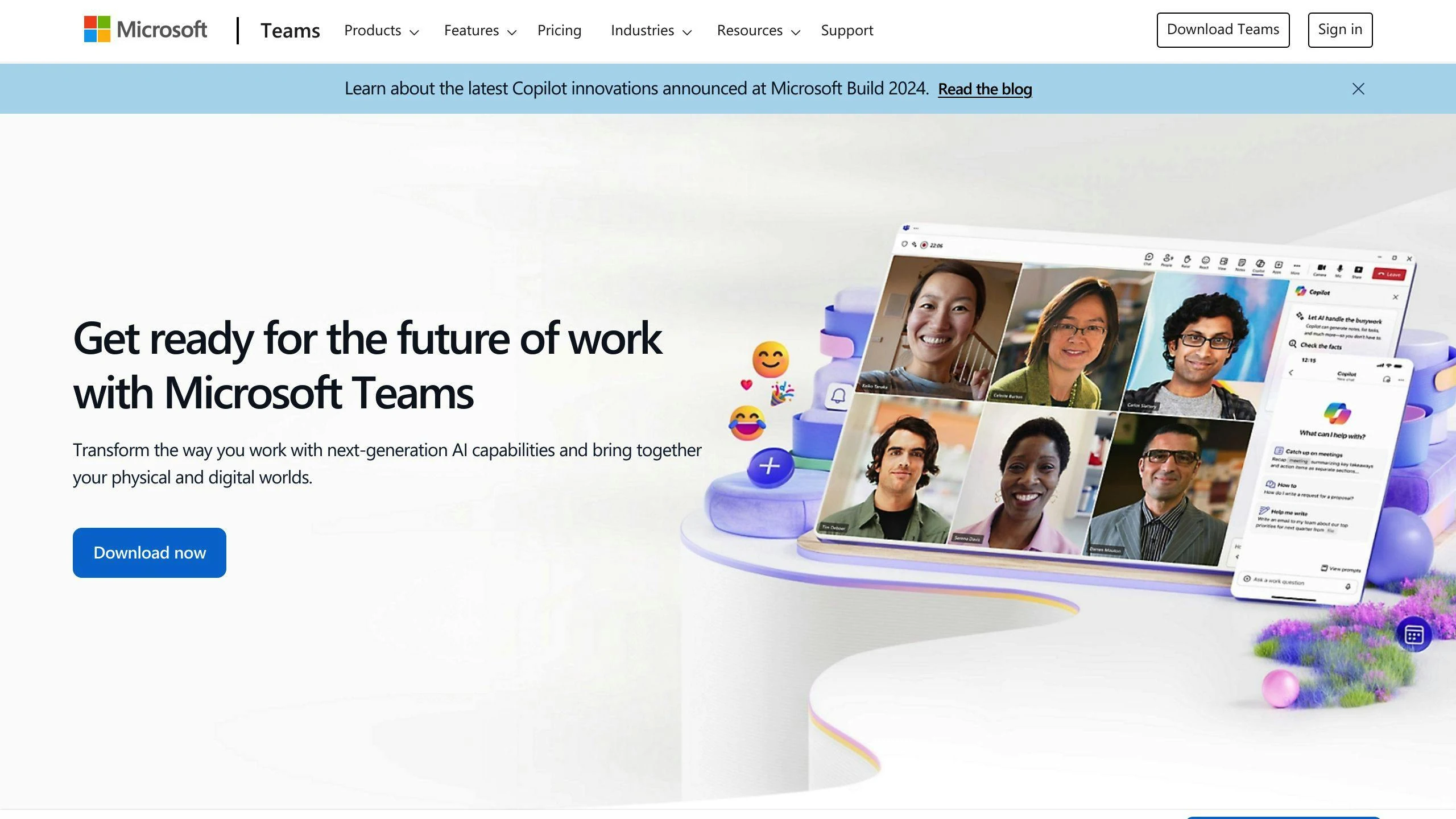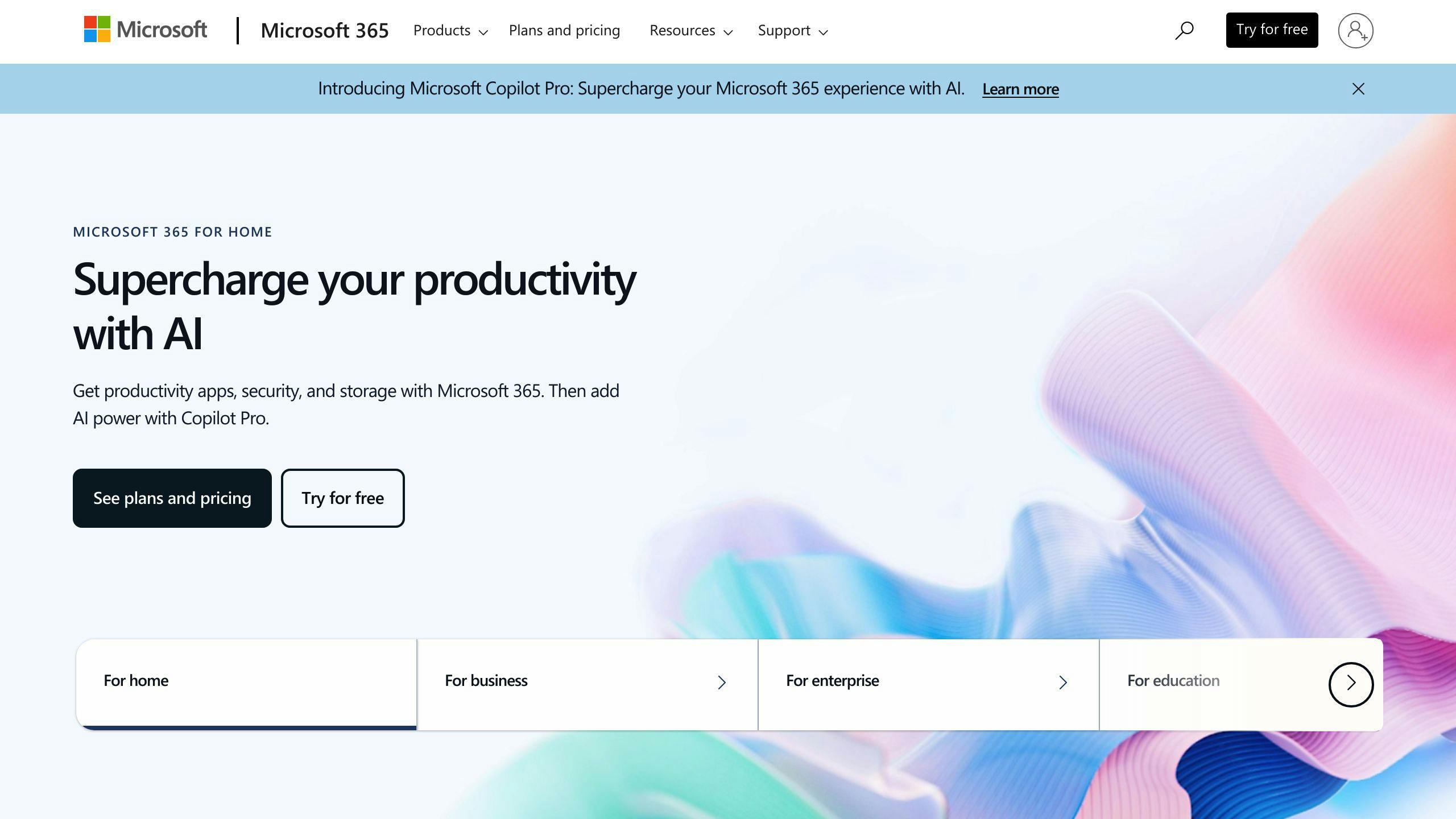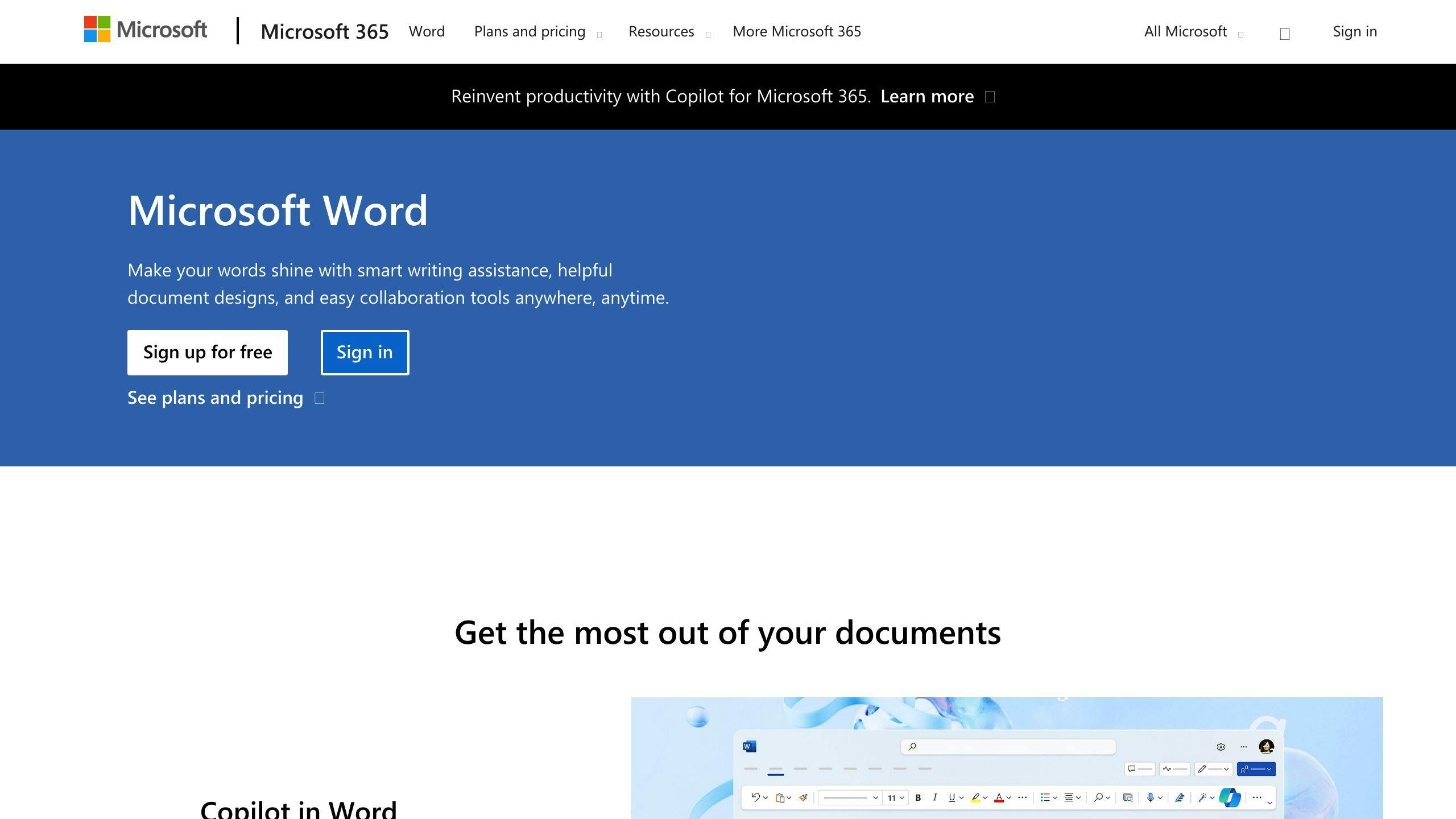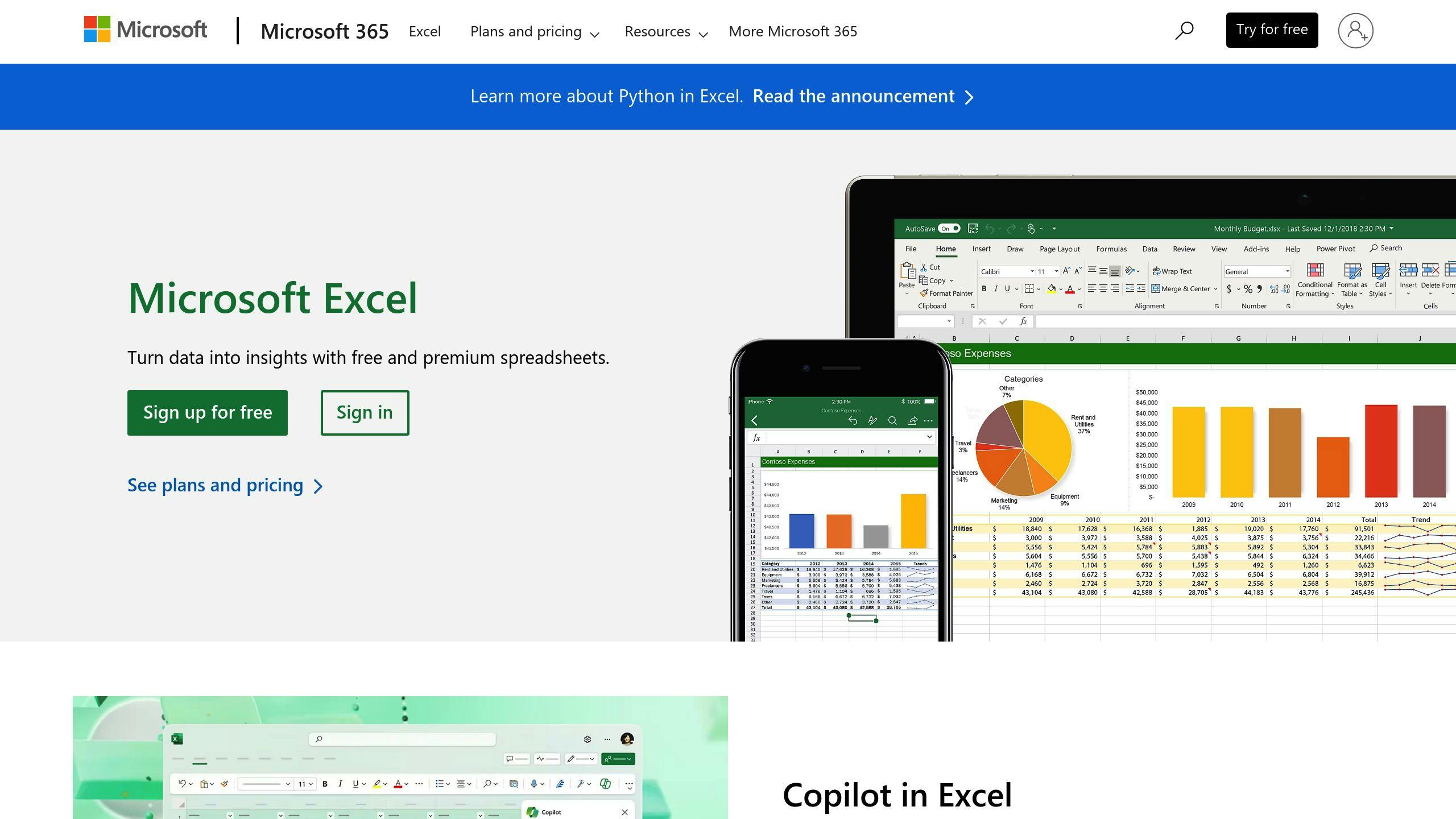Microsoft Teams co-authoring lets multiple people edit documents together in real-time. Here’s what you need to know:
- Works with Word, Excel, and PowerPoint files
- Requires Microsoft 365 subscription and OneDrive/SharePoint storage
- Allows simultaneous editing, comments, and version tracking
- Boosts productivity and collaboration for remote teams
Key benefits:
- No version control issues
- Less email back-and-forth
- Faster document creation
- Clear view of who’s working on what
To start co-authoring:
- Save file to OneDrive/SharePoint
- Click ‘Share’ in Teams
- Enter colleague’s email
- Set "Can Edit" permission
- Click ‘Send’
Common issues and fixes:
- Sync problems: Clear Teams cache
- Permission errors: Ask file owner for access
- Browser issues: Use supported file formats, turn on AutoSave
| Feature | Word | Excel | PowerPoint |
|---|---|---|---|
| Real-time editing | Yes | Yes (Web App) | Yes |
| Content locking | Paragraph | Cell | No |
| File format | .docx | .xlsx | .pptx |
Remember to communicate with your team, organize documents clearly, and use Teams chat alongside co-authoring for best results.
Related video from YouTube
What is Co-Authoring in Microsoft Teams?

Co-authoring in Microsoft Teams lets multiple people work on the same document at once. It’s built into Microsoft 365 apps, OneDrive, and SharePoint.
Here’s what you get with co-authoring:
- See changes in real-time
- Auto-save feature
- Version history
- In-document comments and mentions
How It Helps Teams
Co-authoring in Teams makes teamwork smoother and faster:
1. No more version headaches
Everyone works on the latest version. Always.
2. Less email back-and-forth
Just open the shared doc and start working.
3. Faster document creation
Multiple people can chip in at the same time.
4. Clear view of who’s doing what
See who’s working on which part in real-time.
| Benefit | What It Means |
|---|---|
| Save time | No waiting for others to finish |
| Better teamwork | Work together, no matter where you are |
| Fewer mistakes | No more outdated versions |
| Get more done | Finish docs faster with multiple editors |
To start co-authoring:
- Save your file to OneDrive or SharePoint
- Click ‘Share’
- Enter your colleague’s email
- Set permission to "Can Edit"
- Click ‘Send’
Now you’re ready to edit together, whether you’re using web or desktop versions of Microsoft Office.
"You can click on any file that has been shared in Teams to open and view that file. But if you have a Word, Excel or PowerPoint document, you and your coworkers can edit that document." – Instructor, Microsoft Teams: Working with Files
What You Need for Co-Authoring
To co-author in Microsoft Teams, you’ll need:
Microsoft 365 Plans for Co-Authoring

| Requirement | Details |
|---|---|
| Subscription | Microsoft 365 |
| Apps | Teams and Office (Word, Excel, PowerPoint) |
| Storage | OneDrive for Business or SharePoint |
Without these, co-authoring in Teams won’t work.
Permissions and Settings
You also need:
- Files in OneDrive for Business or SharePoint
- Correct file formats (
.docx,.xlsx,.pptx) - Edit permissions for all co-authors
Co-authoring won’t work with:
- Checked-out files
- Encrypted documents
- Files marked as final
- Documents with ActiveX controls
To share for co-authoring:
- Open file in Teams
- Click "Share"
- Enter co-author’s email
- Set "Can edit" permission
- Click "Send"
Keep it to 10 or fewer co-authors per document. More can cause issues.
How to Start Co-Authoring
Want to collaborate on a document in Microsoft Teams? Here’s how:
1. Find Your File
Open Teams, go to your channel, and click "Files". Your document should be there. No? Just click "Upload" and add it.
2. Prep Your Document
Before you invite the gang:
- Use a
.docx,.xlsx, or.pptxfile - Store it in OneDrive for Business or SharePoint
- Set editing permissions
3. Share and Start
Open your file in Teams, hit "Share", add your co-authors’ emails, and give them editing rights. Click "Send" and you’re off!
| Co-Authoring Checklist | Done? |
|---|---|
| Right file format | [ ] |
| Correct storage | [ ] |
| Permissions set | [ ] |
| Shared with team | [ ] |
"Click on any shared file in Teams to open and view it." – Microsoft Teams Instructor
Now you’re ready to edit together in real-time. Simple, right?
Co-Authoring Step-by-Step
Let’s break down how to co-author documents in Microsoft Teams:
Opening a Shared Document
- Head to your Teams channel
- Click "Files"
- Open your document
Can’t find it? Check OneDrive or SharePoint – they play nice with Teams for co-authoring.
Adding Team Members
To bring in collaborators:
- Open the document in Teams
- Click "Share" (top-right)
- Enter teammates’ emails
- Add a message (optional)
- Hit "Send"
Need to add new editors? You’ll have to use Office Web Apps or the desktop app for now.
Editing in Real-Time
Once everyone’s in, the fun begins:
- Colored cursors show where others are working
- Changes appear instantly
- Auto-save is always on
Quick feature rundown:
| Feature | Purpose |
|---|---|
| Comments | Give feedback |
| @mentions | Grab attention |
| Version history | View or restore old versions |
"If you share Word, Excel, or PowerPoint documents in Teams, you can edit and co-author those documents with your teammates in real time within the Microsoft Teams interface." – Nick, Microsoft Teams Essential Training
Want more editing power? Try the "Open in Desktop App" option.
Advanced Co-Authoring Tips
Let’s explore some pro-level techniques to supercharge your co-authoring in Microsoft Teams.
Comments and Suggestions
Comments are your secret weapon for team feedback:
- Add a comment: Select text or image, hit Ctrl + Alt + M
- Tag teammates: Use @mentions
- Manage feedback: Toggle between Contextual and List Views
Pro tip: Use comments to delegate tasks. "@JaneSmith, can you review this by Friday?"
Tracking Changes and Versions
Keeping tabs on edits is crucial:
- Turn on Track Changes: Review > Track Changes
- Review edits: Each author’s changes get a unique color
- Accept or reject changes: Use the review pane
"Modern comments in Word boost collaboration by letting users leave thoughts or questions for others to review and edit before posting." – Microsoft Community Hub
Want automatic tracking? Try third-party tools like Simul Docs.
Fixing Editing Conflicts
When multiple people edit the same spot, conflicts happen. Here’s how to fix them:
1. "Upload Failed: Resolve Conflict" error:
- Click Resolve
- Use Next to review changes
- Accept or reject edits
- Close when done
2. "Upload Failed: Save as / Discard" error:
- Choose Save a Copy
- Reopen the live document
- Manually add your changes
Pro tip: Before making big changes, give your team a heads-up in the Teams chat.
| Conflict Type | How to Fix |
|---|---|
| Upload Failed: Resolve Conflict | Click Resolve, review changes, accept/reject edits, close |
| Upload Failed: Save as / Discard | Save a Copy, reopen live doc, manually add changes |
sbb-itb-8be0fd2
Tips for Better Co-Authoring
Want to supercharge your team’s productivity with Microsoft Teams co-authoring? Here’s how:
Communicating While Co-Authoring
Communication is crucial when multiple people are working on one document. Here’s how to keep everyone in sync:
- Use Teams chat for real-time discussions about your work
- Add comments in the document for specific feedback
- @mention team members in comments to grab their attention
"Communication and collaboration are the two sides of the same coin." – Anja Bojić, Content Creator and Strategist
Organizing Documents for Multiple Authors
A well-organized document makes co-authoring a breeze:
- Start with a clear outline
- Use headings to break the document into sections
- Assign sections to team members to avoid stepping on toes
| Role | Responsibility |
|---|---|
| Owner | Manages structure and final approval |
| Collaborator | Edits assigned sections |
| Commentator | Provides feedback without editing |
| Reader | Views without editing rights |
Using Teams Chat with Co-Authoring
Teams chat can take your co-authoring to the next level:
- Start a conversation about a file right from the Teams channel
- Use chat to discuss changes before making them
- Share quick updates without interrupting others’ work
Fixing Common Co-Authoring Problems
Co-authoring in Teams can be great, but it’s not always smooth sailing. Let’s look at some common issues and how to fix them.
Sync Issues
Not seeing the latest changes? Try this:
1. Clear your Teams cache:
- Windows: Exit Teams, hit Windows + R, type
%appdata%\Microsoft\Teams, delete everything there. - Mac: Quit Teams, open Terminal, type
rm -r ~/Library/Application\ Support/Microsoft/Teams.
2. Restart Teams and check again.
Still no luck? Open the file in SharePoint. If it’s up-to-date there, Teams is probably the culprit.
Permission Problems
Can’t access a document? Here’s what to do:
- If you see "You need co-authoring permissions…", ask the document owner for access.
- For deactivated accounts, talk to your tenant admin. They might be able to reactivate it within 30 days to get your data back.
After 30 days, all user data (except SharePoint Online docs) is gone for good from Office 365.
Browser Issues
Browser acting up? Try these:
- Make sure AutoSave is on for OneDrive and SharePoint Online files.
- Use these file formats:
| App | Formats |
|---|---|
| Excel | .xlsx, .xlsm, .xlsb |
| Word | .docx, .doc, .docm |
| PowerPoint | .pptx, .ppt, .pps |
- Turn off ‘Track Changes’ while co-authoring.
-
For "Upload Failed" errors:
- "Save as / Discard": Save a copy, reopen the live doc, add changes again.
- "Resolve Conflict": Hit "Resolve" and review each change.
Co-Authoring Different File Types
Co-authoring in Teams works differently for Word, Excel, and PowerPoint. Here’s how:
Word

Word offers real-time collaboration. You can see changes as they happen.
To start:
- Save your document to OneDrive or SharePoint
- Open it via the shared link
- Click Edit Document > Edit in Browser
Word locks paragraphs during editing. After saving, your changes show up in green.
"Co-authoring in Word lets teams work together smoothly. It improves document quality and cuts down on revisions", says Jared Spataro, Corporate VP for Microsoft 365.
Excel

For Excel co-authoring, you need:
- Office 365 subscription
- Latest Excel for Office 365
- .xlsx file format
To co-author in Teams:
- Go to Files
- Click (…)
- Pick Open in Desktop app
The Excel Web App refreshes changes almost instantly, offering better real-time collaboration.
PowerPoint

PowerPoint allows simultaneous editing without locking content. Others see your changes when you save.
| Feature | Word | Excel | PowerPoint |
|---|---|---|---|
| Real-time editing | Yes | Yes (Web App) | Yes |
| Content locking | Paragraph | Cell | No |
| File format | .docx | .xlsx | .pptx |
Use Comments to chat while working. Tag people with @ to notify them directly.
For all file types:
- Turn on AutoSave for automatic updates
- Don’t move shared files in OneDrive or SharePoint
Combining Co-Authoring with Other Teams Features
Teams isn’t just about document collaboration. It’s a powerhouse when you mix co-authoring with other features.
Co-Authoring During Video Calls
Ever edited a document while on a video call? With Teams’ Live Share, you can. No more screen sharing needed.
Here’s how:
- Start a Teams video call
- Click the "+" in the toolbar
- Pick your collaboration app
Companies are already using this:
| Company | How They Use Live Share |
|---|---|
| Hexagon | 3D model work |
| SkillSoft | Video notes |
| Accenture | Custom apps |
"Live Share lets us work on 3D models in real-time. It’s a game-changer for our design process", says someone from Hexagon.
Co-Authoring in Teams Channels
Channels are your collaboration hub. Each one has its own file folder. It’s like a digital filing cabinet for your team.
Want to work on a file together?
- Upload it to the channel
- Open it in Teams
- Edit away – everyone can join in
Just remember: if it’s in the channel, everyone can see it.
| What You Get | Why It’s Cool |
|---|---|
| Auto SharePoint site | Easy file management |
| Real-time edits | See changes instantly |
| Channel file folders | Keep stuff organized |
A project manager at a big company told us: "Teams channels have made our document work so much smoother. We edit and chat about changes all in one spot."
Security in Co-Authoring
Co-authoring in Teams is great, but it means more people can access your files. Here’s how to keep things safe:
Controlling Document Access
Teams uses SharePoint Online for file storage. You can control who sees what:
- Set file permissions: Open your file in SharePoint, click "Manage Access". Choose "Can edit" for collaborators or "Can view" for readers.
- Use private channels: These limit file access to channel members only.
- Manage guest access: Be careful with external users. You can block guest access to sensitive files:
| Action | How |
|---|---|
| Block all guests | Teams Admin Center > Settings > Guest access |
| Allow team-specific guests | Team owner adds guests to their team |
Protecting Sensitive Data
- Use sensitivity labels: These help protect important info. You can encrypt files, add watermarks, and control editing/viewing rights. Set up in Microsoft 365 compliance center.
- Set up Data Loss Prevention (DLP): This stops accidental sharing of sensitive info. It can block messages with sensitive content and prevent guests from opening sensitive files.
- Change default sharing settings: By default, files shared in chats are visible company-wide. Change this in SharePoint Online admin center under ‘Sharing’ policies.
- Use encryption: Teams encrypts all network traffic and stored files.
- Educate your team: Teach them about phishing, strong passwords, and when to use private vs public channels.
Conclusion
Microsoft Teams co-authoring is changing how we work together remotely. Let’s recap the key points:
- Multiple users can edit documents at the same time in Word, Excel, and PowerPoint
- You can control who sees what to keep your data safe
- Microsoft is adding AI features like smart search and auto-transcripts for video calls
"The future of collaboration is bright." – Serena Paul, Researcher
Teams is breaking down distance barriers and changing how we work together. To get the most out of co-authoring:
- Train your team on how to use it
- Make rules for organizing files
- Use chat and video calls while working on documents
As we head into 2024, expect co-authoring to work even better with other Teams features. This, plus better security and accessibility, will keep Teams at the top of the collaboration game.
FAQs
Can I co-author documents in Teams?
Yes, you can. Teams lets you work on Office files with others at the same time. This works for files saved in OneDrive, SharePoint, or Teams, and it’s available in both online and desktop apps.
What’s the best way to work together on a Teams document?
Share files through OneDrive. Here’s how:
- Go to OneDrive > My Files in Teams
- Find your file
- Hover over it and click Share
- Enter who you want to share with
- Adjust settings if needed
- Click Send
By default, people can edit. You can change this to review or view only.
| App | Supported Formats | Minimum Version | Mobile Support |
|---|---|---|---|
| Word | .docx, .doc, .docm | Office 2010 | Yes |
| Excel | .xlsx, .xlsm, .xlsb | Office 365 | Yes |
| PowerPoint | .pptx, .ppt, .pps | Office 2010 | Yes |
Tip: Turn on AutoSave for files in OneDrive, OneDrive for Business, or SharePoint Online. This saves changes in real-time.

